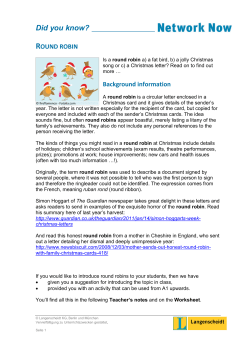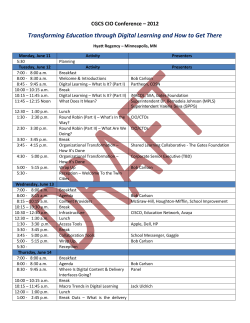
Reckoning with the Risk of Catastrophes: The Challenge of Interpreting Prior Near-Miss
Reckoning with the Risk of Catastrophes: The Challenge of Interpreting Prior Near-Miss Events Robin L. Dillon-Merrill Associate Professor, McDonough School of Business, Georgetown University With collaborators Cathy Tinsley (Georgetown University) and Peter Madsen (Brigham Young University) Risk Analysis Provided in 1990 (From: Paté-Cornell & Fischbeck, 1999) Columbia Data (CAIB, 2003) In-Flight Anomalies Reported for each NASA Space Shuttle Mission (1981-2010) 80 70 60 50 40 30 20 10 0 1980 1985 1990 1995 2000 2005 2010 Latent errors interacting with enabling conditions • Slices = safety systems • Holes = latent errors & hazards • System failure only occur when the holes in several layers line up indicating the interaction of several errors with some enabling conditions (and generally bad luck) What is a Near-Miss? • Near-miss – An event that has some non-trivial probability of a negative (even fatal) outcome the actual outcome is non-hazardous – A success that could have been a failure except for good luck • “Almost” vs. “Could Have” Events are processed differently Could Have Almost Recommendations for Recognizing and Preventing Near-Misses 1. Pay attention to High Pressure Situations. Ask “If I had more time and more resources would I make the same decision?” 2. Watch for normalization of deviance. Ask “Have we always been comfortable with this level of risk? Has our policy toward this risk changed over time?” 3. Search for and uncover root causes. Ask “Why did this effect happen? What was required to produce this effect? What do we need to do to address the root cause?” 4. Demand accountability. Ask “Does the corporate culture make us feel accountable for our decisions?” Recommendations for Recognizing and Preventing Near-Misses 5. Consider worst-case scenarios. Ask “Could we have seen other outcomes? How bad could the outcome have been?” 6. Evaluate projects at every stage. Ask “Can we ‘pause and learn’ something at this project milestone?” 7. Reward owning up. Ask “How can we create an organizational culture that recognizes and rewards uncovering near-misses?” Conclusions • Cognitive biases make near-misses hard to see • Even when leaders recognize them, often it is hard to grasp their significance • Thus, we miss opportunities for organizational improvement when cost is small and before disaster strikes Articles on Near-Misses • • • • • Catherine H. Tinsley, Robin L. Dillon, Matthew A. Cronin, “How NearMiss Events Amplify or Attenuate Risky Decision Making”, Management Science, September 2012, pp. 1596-1613. Catherine H. Tinsley, Robin L. Dillon, and Peter M. Madsen, “How to Avoid Catastrophe,” Harvard Business Review, April 2011, pp. 90-97. Robin L. Dillon, Catherine H. Tinsley, and Matthew A. Cronin, “Why Near-Miss Events Can Decrease an Individual’s Protective Response to Hurricanes,” Risk Analysis, Vol. 31, No. 3, March 2011, pp. 440-449 – selected as one of six Best Papers of 2011 by the editorial staff. Robin L. Dillon and Catherine H. Tinsley, “How near-misses influence decision making under risk: A missed opportunity for learning”, Management Science, Vol. 54, No. 8, August 2008, pp. 1425-1440. Robin L. Dillon and Catherine H. Tinsley, “Interpreting Near-Miss Events,” Engineering Management Journal, Vol. 17, No. 4, December 2005, pp. 25-29.
© Copyright 2025





















